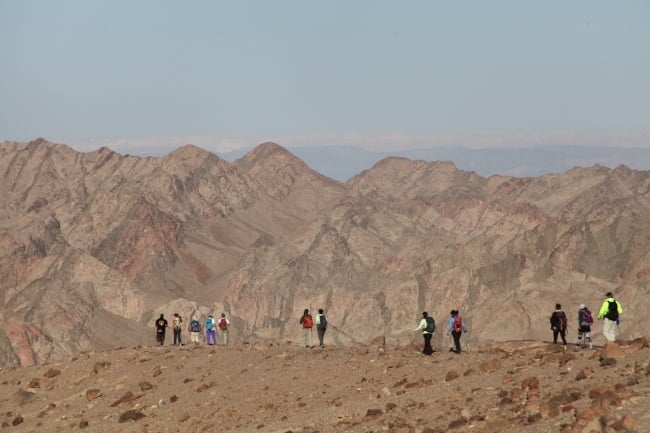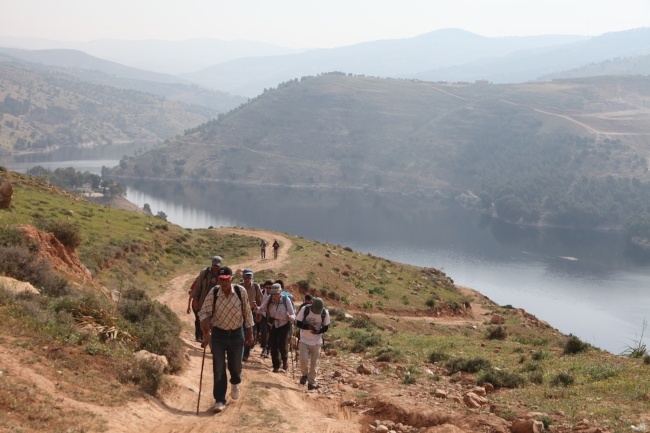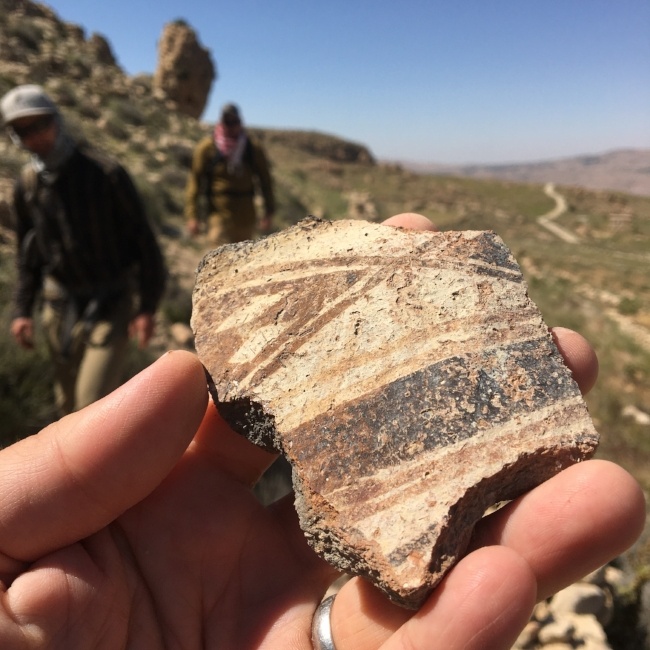
Walking Through Time
Just outside the village of Ma’tan we came upon some forgotten Roman city, the long and flowing stone walls following the contour of the land, each rock carefully put in place by human hands once upon a time. I have begun to recognize them now, the different ruins on the trail (Ottoman, Greek, Bronze Age, Ummayad, Mamluk, Crusader, and so on)—All this history has become second nature to me—as if walking over countless layers of civilization is rather unexceptional. This time though, as we hiked past the whispering foundations, the stones sprouting with sage, I heard the sound of my boots crunching over shattered pieces of pottery.
I stopped to have a closer look and was soon rifling through hundreds of bits of broken Terra Cotta, blowing away the dust to see the paintings on each angled shard. One particular piece stood out—a lump the size of a cracker, painted with a distinctive white, black, and red geometric design—Greco-Roman art that was made almost two thousand years ago. I clung to this find for an extra minute and grew woozy from the weight of it all—to imagine this very same place in the time when this pot was whole, sitting on the shelf of some Roman kitchen filled with people in togas, eating the same kind of olives and bread that we are eating now, but all speaking Latin.
That is part of the magic of this trail—not simply the physical adventure of the hike, or the great natural beauty that lifts you up every hour—but this great dimension of time and the very real notion that we are walking through time. Some days it is obvious—like the unassuming entrance to Little Petra, where after scrambling up the most impossible stone canyon, you realize that the steps in the rock are man-made, and then your eyes began to see the temples carved from the stone. Other days, the signs are less grand, but no less wondrous. A day after leaving Petra with its tour groups and 10-dinar camel rides, we saw a group of people sitting in the dirt near Wadi Sabra, exposed and working in the middle of the hot day. We climbed up to them and found an archaeological dig in action, with a whole team of German-Jordanian archaeologists and students painstakingly pulling away the compact dust one cubic centimeter at a time, lifting out the tiny remnants of a stone-age civilization.
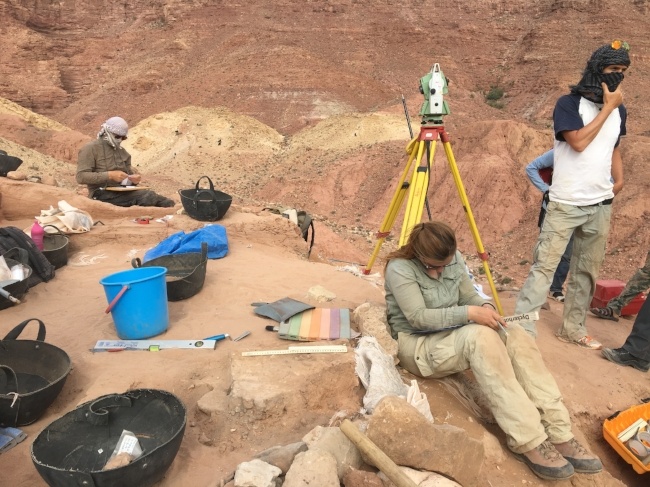
“Anybody can pull stones out of the ground,” said Jonathan, an archaeology professor at the University of Cologne. “It’s finding out how they relate to one another, and telling the story of what happened here that really matters.” His research group was slowly searching for the answer to the secrets in the dirt—did these earliest humans only pass through this area, or did they return again and live here, and if so, why?
Jonathan picked up a half-dozen stone-age tools that he had discovered that afternoon—carefully-chipped flint blades of different shapes and sizes, their edges still sharp enough to cut through skin. His hodge-podge collection was a kind of stone-age pocketknife—a range of specific tools used by our own human ancestors when they first made their way out of Africa.
“We know that they had perfected the skill of making complex tools, but then they lost that knowledge after they changed materials,” Jonathan explained, meaning that when we reached the Bronze Age, our ability to work flint so intricately had disappeared. I examined each of the tools carefully, feeling the smooth and polished facets, comparing the blunt edge versus the sharp blade, haunted by the realization that this tool was last held by another human some 400 centuries ago.
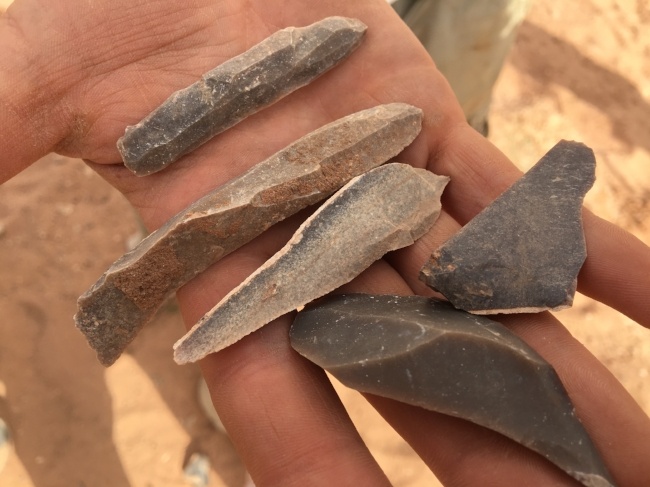
This discovery reinforces the fact that humans walked this path some 40,000 years ago—and even now, the Jordan Trail holds a hidden wealth of prehistoric knowledge.
“What was their life like back in the Stone Age?” I wondered out loud, hoping that the archaeologist could illustrate the world that was connected to this singular stone tool.
“Well, for one, they walked a lot more than you do now,” Jonathan answered. “You said you’re averaging 15 to 20 kilometers a day, but Stone-Age man could easily walk 100 kilometers without stopping! They followed the animals, and their bodies were much more used to walking long distances than we are.”
“And they probably did it barefoot,” I said, reflecting on the many blisters some of us hikers have had—even with boots and socks.
“This is the thing,” Jonathan laughed, “It’s really impossible to compare because our lives are so different. For example, everyone is following this Paleo Diet fad, but none of us can live the real Paleo lifestyle to match. Sure, you can eat meat all day, but you would need to walk 100 kilometers—basically chasing your food—in order to stay fit. Even with all the intense hiking you think you’re doing now, it’s nowhere close to what Stone Age man was doing everyday: walking, running, hunting—just to live was a huge struggle.”
This put our last kilometer of the day in perspective—after we bid farewell to the archaeologists, we hiked up one last mountain while I stared at the countless small rocks beneath my feet. I thought back to these earliest hiking homo sapiens—men and women who hiked to survive and not just for fun like me. I imagined their bare footprints in the dust before me, and then I followed along, step after step, just like the ants in single file, all of us marching through eternity.
Follow my personal adventure on social media with #AndrewWalksJordan and #ThruJT and on the Andrew Walks Jordan homepage.



